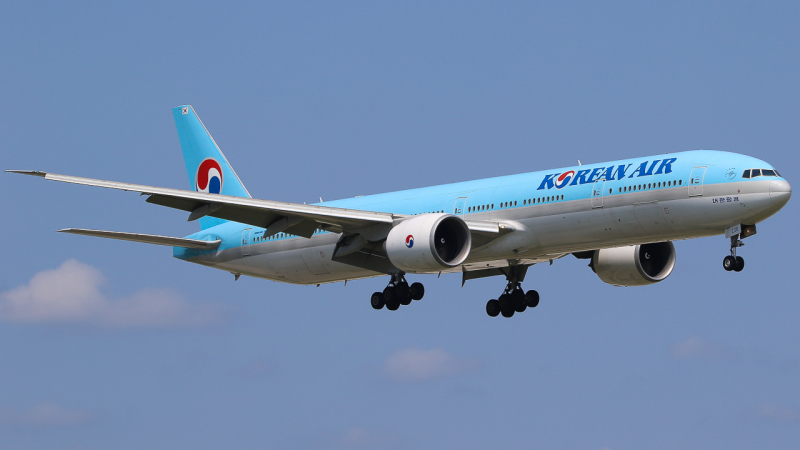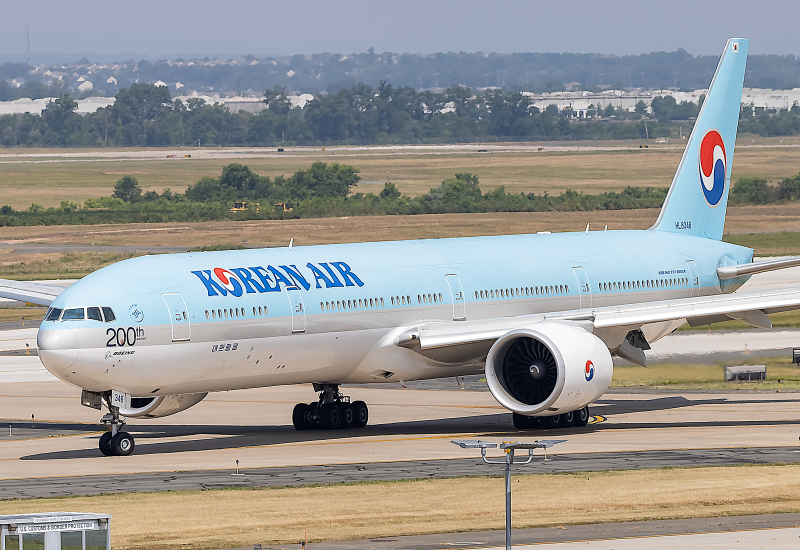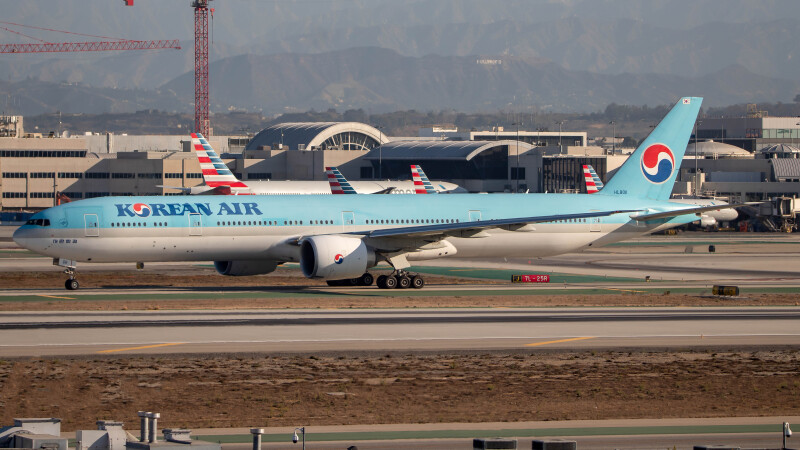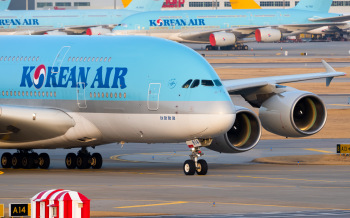Korean Air plans to use the Airbus A380 on its service from Seoul-Incheon International Airport (ICN) to Hong Kong International Airport (HKG) starting in October. Korean Air's future schedule reveals that the airline plans to operate 28 direct A380 flights between the two destinations. This represents a total of 11,396 seats on all routes combined.
The return of the A380 on the route suggests that travel demand in East Asia is rebounding from the COVID-19 pandemic. Nonstop flights between Seoul and Hong Kong are also offered by Asiana Airlines, Cathay Pacific, Greater Bay Airlines, HK Express, Hong Kong Airlines, and T'way Air.

Korean Air currently uses the A380 on four routes. The routes fly from Seoul-Incheon to John F. Kennedy International Airport (JFK), Los Angeles International Airport (LAX), and Taipei-Taoyuan International Airport (TPE).
Korean Air plans to operate two daily flights between Seoul and Hong Kong in October. The morning flight will use the Airbus A330-300 while the evening flight will use the A380.
For the A380 service, Korean Air flight KE177 will depart from Seoul at 7:45 p.m. Korea Standard Time (KST) and arrive in Hong Kong at 10:30 p.m. Hong Kong Time (HKT). Flight KE178 leaves Hong Kong at 12:45 a.m. HKT and arrives in Seoul at 5:25 a.m. KST.

Korean Air plans to offer the same number of flights to Hong Kong in October as to Taipei. Meanwhile, the airline will provide 31 flights to New York-JFK and 34 to Los Angeles during the same time period. This is equivalent to 12,617 seats and 13,838 seats in each direction, respectively.
All of Korean Air's A380 flights combined represent 98,494 seats for passengers flying to and from Seoul. The airline will have 242 round-trip flights once the A380 service to Hong Kong returns. Seat capacity is expected to grow further as travel demand returns to pre-pandemic levels.
Many airlines dropped the A380 during the pandemic due to weak passenger demand. However, many airlines are now returning to the A380 service to serve an increasing number of passengers. The airlines that operate the A380 include Emirates, Qantas, and Lufthansa.

Even though overall passenger capacity on international flights has rebounded, capacity in the Asia-Pacific region is still significantly below pre-pandemic levels. As of July 2023, seat capacity on flights from Europe to Asia and from the U.S. to Asia is 20% and 40% below pre-pandemic levels, respectively.
One reason for lower seat capacity in the Asia-Pacific is that China's aviation market currently has 50% less seat capacity than pre-pandemic levels. China serves as a large source of tourists for Asian destinations such as Japan, South Korea, and Thailand. This means that weak travel demand from Chinese tourists causes other Asian countries to reduce their seat capacity due to low demand.
However, travel demand and seat capacity are expected to increase in the coming months. Recent data shows that seat capacity on international flights departing from China will increase by 75% in the third quarter of this year compared to the second quarter. The increase will be driven by a 9% increase in seat capacity on flights between the U.S. and the Asia-Pacific region in July and August.
Bomb Threat Cancels Air New Zealand Flight, Delays Passengers » Emirates Dismisses Viral A330 Plane Crash Video as "Fabricated and Untrue" » Maldivian Airlines Introduces First-Ever Widebody Aircraft, Plans New China Flights »
Comments (0)
Add Your Comment
SHARE
TAGS
NEWS South Korea Korean Air Airbus A380 Seoul ICN LAX JFK Taipei TPERECENTLY PUBLISHED
 Could You Survive a Plane Crash? The Unlikely Science of Plane Crash Survival
With air travel consistently being heralded as the safest form of public transport, most of us do not board a plane pondering our chances of survival in the event of a crash. But, is it possible to survive one?
INFORMATIONAL
READ MORE »
Could You Survive a Plane Crash? The Unlikely Science of Plane Crash Survival
With air travel consistently being heralded as the safest form of public transport, most of us do not board a plane pondering our chances of survival in the event of a crash. But, is it possible to survive one?
INFORMATIONAL
READ MORE »
 Maldivian Airlines Introduces First-Ever Widebody Aircraft, Plans New China Flights
Maldivian, the government-owned national airline of the Maldives, has just welcomed its first-ever wide body aircraft: the Airbus A330-200. With the new aircraft, the carrier also plans brand-new long haul international flights to China.
NEWS
READ MORE »
Maldivian Airlines Introduces First-Ever Widebody Aircraft, Plans New China Flights
Maldivian, the government-owned national airline of the Maldives, has just welcomed its first-ever wide body aircraft: the Airbus A330-200. With the new aircraft, the carrier also plans brand-new long haul international flights to China.
NEWS
READ MORE »
 Thousands of Flights Impacted as Winter Storm Blair Hits U.S.
Winter Storm Blair has unleashed a huge blast of snow, ice, and freezing temperatures across the Central and Eastern United States.
As of Sunday afternoon, over 6,700 flights and counting have been disrupted. This includes cancelations and significant delays leaving passengers scrambling to change flights and adjust travel plans.
NEWS
READ MORE »
Thousands of Flights Impacted as Winter Storm Blair Hits U.S.
Winter Storm Blair has unleashed a huge blast of snow, ice, and freezing temperatures across the Central and Eastern United States.
As of Sunday afternoon, over 6,700 flights and counting have been disrupted. This includes cancelations and significant delays leaving passengers scrambling to change flights and adjust travel plans.
NEWS
READ MORE »





